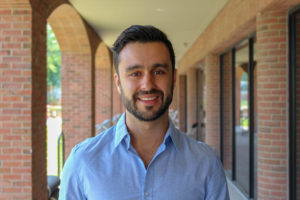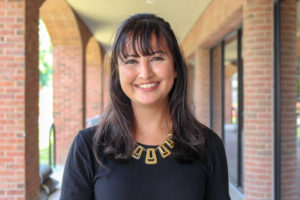EDITOR’S NOTE: This article is a collaboration between Cairn Cross of FreshTracks Capital and Diane Abruzzini ’17 of VENTURE.co Holdings, Inc. It is one of a series we will be publishing concurrently with FreshTracks Capital. Cairn Cross co-founded FreshTracks in 2000, and has worked as Managing Partner of the firm since that time. Notable FreshTracks VC investments include SunCommon, Mamava, and Eating Well. Cairn has helped to build a true Vermont entrepreneurial ecosystem by hosting pitch events, accelerator programs, workshops, and teaching at multiple Vermont universities and colleges. He is a former co-chair of The Sustainable Innovation MBA Advisory Board. Diane Abruzzini has built her career as a food and agriculture entrepreneur and business consultant. She was a student of Cairn Cross during her time at UVM’s Sustainable Innovation MBA program. After completing her degree, she spent time working for FreshTracks partners as an analyst. She currently works in marketing and communications at VENTURE.co Holdings Inc, who’s wholly owned subsidiary VENTURE.co Brokerage Services LLC is a FINRA-licensed broker-dealer.
The valuation process can be murky for both entrepreneurs and investors. Private company stock is typically a “Level III” asset under ASC Topic 820 and its value “cannot be determined by using observable inputs of measures such as market prices or models.” Fair value is estimated rather than observed through readily observable market prices.
Entrepreneurs and investors often disagree on the valuation approach that should be used in a particular transaction. Should one base a private company’s valuation on the comparable metrics for publicly traded companies operating in the same industries, or should one base valuation on the estimated present value of a projected stream of cash flow? If you use public market comparables, which metric is most important to valuation? Revenue? EBITDA? Users? Growth Rate? If estimating the net present value of a stream of cash flow, which discount rate do you choose and are you being too aggressive or conservative in cash flow estimates? Do you arbitrarily choose the mid-growth position? Every entrepreneur, venture capitalist (VC), broker-dealer (BD), and investment bank will use a variety of criteria in order to determine valuation. None of the approaches are perfect–there is no secret sauce–but there are important differences to how VCs and BDs tackle company valuations.
First, we must consider to whom VCs and BDs have responsibilities. VCs are trying to create strong investment returns for the Limited Partners (LPs) who are the investors in the VC fund. Valuation and other terms such as dividends will be negotiated to give the venture investors an investment return commensurate with perceived risk. Before making an investment, VCs rely on the business plan and financial projections supported by company documentation as well as prior investment experience among the VC partners and external due diligence efforts to determine a reasonable company valuation. Continue reading “The Cap Raise: Valuation”

 As a mechanical engineer working in the renewable energy and hydrogen fuel sector for six years, I started to notice that the development of these disruptive technologies will not reach full commercialization out of pure environmental enthusiasm. I understood that the creation of new business models based on sustainable practices that serve the vested interests of not just some, but all of the stakeholders, should be the objective to be pursued. It was then that I realized it was time to go back to school. I chose to attend an MBA program because I saw business as a tool to complement my engineering background. However, I specifically chose this program because it has an primary objective that I did not find in any other MBA program ― to make the world a better place.
As a mechanical engineer working in the renewable energy and hydrogen fuel sector for six years, I started to notice that the development of these disruptive technologies will not reach full commercialization out of pure environmental enthusiasm. I understood that the creation of new business models based on sustainable practices that serve the vested interests of not just some, but all of the stakeholders, should be the objective to be pursued. It was then that I realized it was time to go back to school. I chose to attend an MBA program because I saw business as a tool to complement my engineering background. However, I specifically chose this program because it has an primary objective that I did not find in any other MBA program ― to make the world a better place. Why did you choose to attend The Sustainable Innovation MBA program?
Why did you choose to attend The Sustainable Innovation MBA program?



 I chose to join The Sustainable Innovation MBA program for a variety of reasons but one was the desire to find others who share the drive and fire to put their shoulders into the work that desperately needs to be done in the world. It is an odd thing to have the idea for that and then meet people who exceed your expectations. The excitement of being around actual humans with impressive and diverse backgrounds, rather than just concepts that such people exist, has been a pleasant condensation of reality.
I chose to join The Sustainable Innovation MBA program for a variety of reasons but one was the desire to find others who share the drive and fire to put their shoulders into the work that desperately needs to be done in the world. It is an odd thing to have the idea for that and then meet people who exceed your expectations. The excitement of being around actual humans with impressive and diverse backgrounds, rather than just concepts that such people exist, has been a pleasant condensation of reality. The truly daunting part of this experience is the slew of intangibles that you don’t prepare for: the people you might meet, the things you might say, or the unexpected things you might learn. I think I speak for much of my cohort when I say that the first steps into Kalkin 110 on Monday were some of the most exciting and terrifying steps of my life.
The truly daunting part of this experience is the slew of intangibles that you don’t prepare for: the people you might meet, the things you might say, or the unexpected things you might learn. I think I speak for much of my cohort when I say that the first steps into Kalkin 110 on Monday were some of the most exciting and terrifying steps of my life. Last August, I packed up a van filled with my belonging and headed north, first on I-93 and then on I-89. I had come to Burlington to participate in a one-year, intensive MBA program. I had resisted graduate school and more formal education for a while, but something about this program spoke to me.
Last August, I packed up a van filled with my belonging and headed north, first on I-93 and then on I-89. I had come to Burlington to participate in a one-year, intensive MBA program. I had resisted graduate school and more formal education for a while, but something about this program spoke to me.